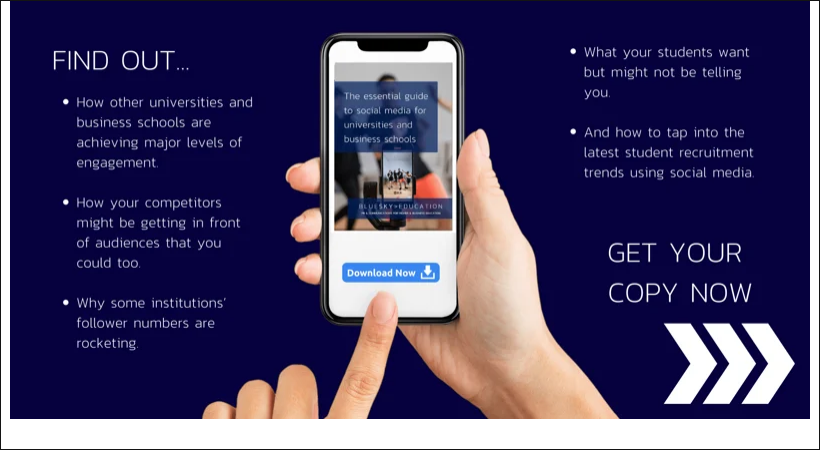As the ‘professional’ social media platform, with around a billion members, LinkedIn has solidified its position as the place for networking and thought leadership content distribution. Which is one of the reasons why adding LinkedIn newsletters into your marketing and communications mix can significantly elevate your outreach strategy. Let's explore why LinkedIn newsletters deserve your attention and how to harness their full potential…
What is the difference between a LinkedIn newsletter, an article and a post?
LinkedIn offers various content formats, each with its unique strengths. The ideal LinkedIn strategy will encompass all three.
Here are the key differences:
- Posts are the original LinkedIn content form. They are designed to be relatively brief and can achieve high visibility but have a short lifespan. Who they are shown to is based on the algorithm and the amount of engagement they achieve within the first few hours of posting but is thought to initially be about 6% of your connections and followers.
- Articles are a longer form of content that are displayed in the activity section of your LinkedIn profile, and are shared with your followers and connections via their newsfeed and their notifications.
- Newsletters, however, are a subscription-based model, where both your connections and the wider LinkedIn audience can be directly invited to subscribe or suggested to subscribe via the algorithm based on similar interests. When you set up a newsletter you should commit to a frequency you will stick to, whether it be monthly, weekly, biweekly, or even daily. Your content is then delivered directly to an engaged audience in their inbox.
One distinct advantage LinkedIn newsletters have, based on the way the algorithm is currently pushing them, is that they often receive higher visibility and engagement rates compared to the other content types.
Benefits of a LinkedIn newsletter
Incorporating LinkedIn newsletters into your strategy can:
- Amplify your institution's voice and recognition of your thought leadership
- Provide a direct line to alumni, students and industry partners, increasing your engagement with your target audiences
- Boost brand authority and trust within your professional ecosystem
Of the billion LinkedIn members, over 450 million people subscribe to at least one newsletter on LinkedIn, with newsletters focused on industry trends and professional development tending to have the highest subscription rates. Recognising their popularity, LinkedIn has seen a 59% growth in the number of newsletters published in the past year, with publishers noting an average of 201% more subscribers via LinkedIn than through their standard email newsletter
However, there are a few cons:
- Dependence on LinkedIn's platform where you don’t have access to your subscriber email addresses
- Potential future algorithm changes
- Additional ongoing content creation demands
- Limited analytics
To mitigate these cons, you could back up your newsletter content on your own platforms and include a CTA pointing subscribers to these. It will also be beneficial to stay informed about LinkedIn's algorithm changes and adjust your strategy accordingly.
LinkedIn newsletter vs email newsletter
While both have their place, LinkedIn newsletters offer:
- A broader pre-existing professional network
- Higher potential for organic growth
- Seamless integration with other LinkedIn features
However, email newsletters provide:
- More control over subscriber data
- Greater design flexibility
- Independence from platform changes
Many institutions find success in using both channels in tandem, tailoring content to each platform's strengths and audience expectations.
LinkedIn newsletter examples
Let's look at some standout newsletter examples from international business schools:
1. Harvard Business School's "HBS Ideas and Insights"
Described as “a weekly roundup of the top research, ideas and happening at HBS”, with 745,848 subscribers at the time of writing.
What stands out?
- Keeps a clear, concise, format
- Maintains consistent branding and imagery
- Demonstrates a clear value proposition
- Links to external resources to expand upon what is being shared
- Ends with a strong and simple call to action (CTA)
2. INSEAD's "Best of INSEAD Knowledge"
Described as “top stories and insights from INSEAD faculty this month”, with 10,601 subscribers at the time of writing.
What stands out?
- Keeps a clear, consistent, format
- Demonstrates a clear value proposition
- Balances academic insights with practical business applications
- Links to external resources to expand upon what is being shared
3. EHL Hospitality Business School’s “EHL Insights”
Described as “actionable insights into the World of Hospitality, Business & Education every month”, with 36,952 subscribers at the time of writing.
What stands out?
- Uniform branding and imagery
- Maintains a consistent format
- Demonstrates a clear value proposition
- Delivers on its promise of actionable insights
- CTAs links to external courses to expand upon what is being shared
4. King’s College London’s “King’s Alumni Newsletter”
Described as “regular updates from the King’s alumni team”, with 13,443 subscribers at the time of writing.
What stands out?
- Keeps a clear, consistent, alumni profile format
- Demonstrates a clear value proposition
- Links to external resources to expand upon what is being shared
- Majority of editions end with a strong and simple call to action (CTA)
- Used to repurpose and expand the reach of their InTouch magazine articles
These examples demonstrate how to effectively blend educational content with institutional branding.
What sets the best LinkedIn newsletters apart?
Top-performing newsletters typically:
- Offer unique insights not readily available elsewhere
- Maintain a consistent voice, style and format
- Engage with readers through questions and calls-to-action
- Provide a mix of timely and evergreen content
- Include actionable tips to demonstrate immediate value
- Maintain a regular publishing schedule, ideally weekly or bi-weekly
- Include compelling headlines that promise clear value
- Use visuals to break up text and enhance engagement
What should my newsletter be about?
With only a handful of international business schools publishing a LinkedIn newsletter on a regular basis this is an excellent opportunity to engage with your target audience.
What content should you share?
You have a wealth of content within your institution that can be repurposed for LinkedIn to achieve wider distribution, such as:
- Industry trends and analysis
- Alumni success stories and career insights
- Faculty research and its real-world applications
- Student projects and innovations
- Executive education opportunities
Pick an overarching theme such as one of these, remembering to focus on genuinely valuable insights over promotional content.
How to get maximum reach (and engagement) for your LinkedIn newsletter
LinkedIn newsletter best practices for maximum impact:
- Promote your newsletter across your other social media channels
- Encourage faculty and staff to share with their networks
- Feature newsletter content in other school communications
- Engage with comments and foster discussions
- Collaborate with industry influencers to tap into their audiences and add additional voices and perspectives
Final thoughts
LinkedIn newsletters offer a powerful tool for business school communications professionals to expand their reach and influence. By consistently delivering valuable content to an engaged audience, you can strengthen your institution's brand, foster community engagement, and showcase thought leadership.
To get started, consider the following steps:
- Define your newsletter's unique value proposition
- Create a content calendar aligning with your school's objectives
- Set up your LinkedIn newsletter following the platform's guidelines
- Develop a promotion strategy to grow your subscriber base
- Regularly analyse performance metrics to refine your approach
Remember, success with LinkedIn newsletters comes from a commitment to providing consistent, high-quality content that resonates with your audience. Depending on your goals, you could measure this success based on:
- How quickly your subscriber base is expanding
- The percentage of subscribers opening your newsletters
- Tracking clicks on links within your newsletter
- Keeping an eye on likes, comments, and shares to gauge audience interaction
- Tracking how newsletter engagement translates to desired actions (e.g. event registrations, programme applications, etc.)
Once you’ve published your first edition, don’t forget to invite us to subscribe – we’d love to support what you have to share.
BlueSky Education's Head of Group Marketing is a seasoned marketing professional, experienced in content marketing, social media, engagement strategy, CRM management, marketing measurement (ROI), and podcast production.





